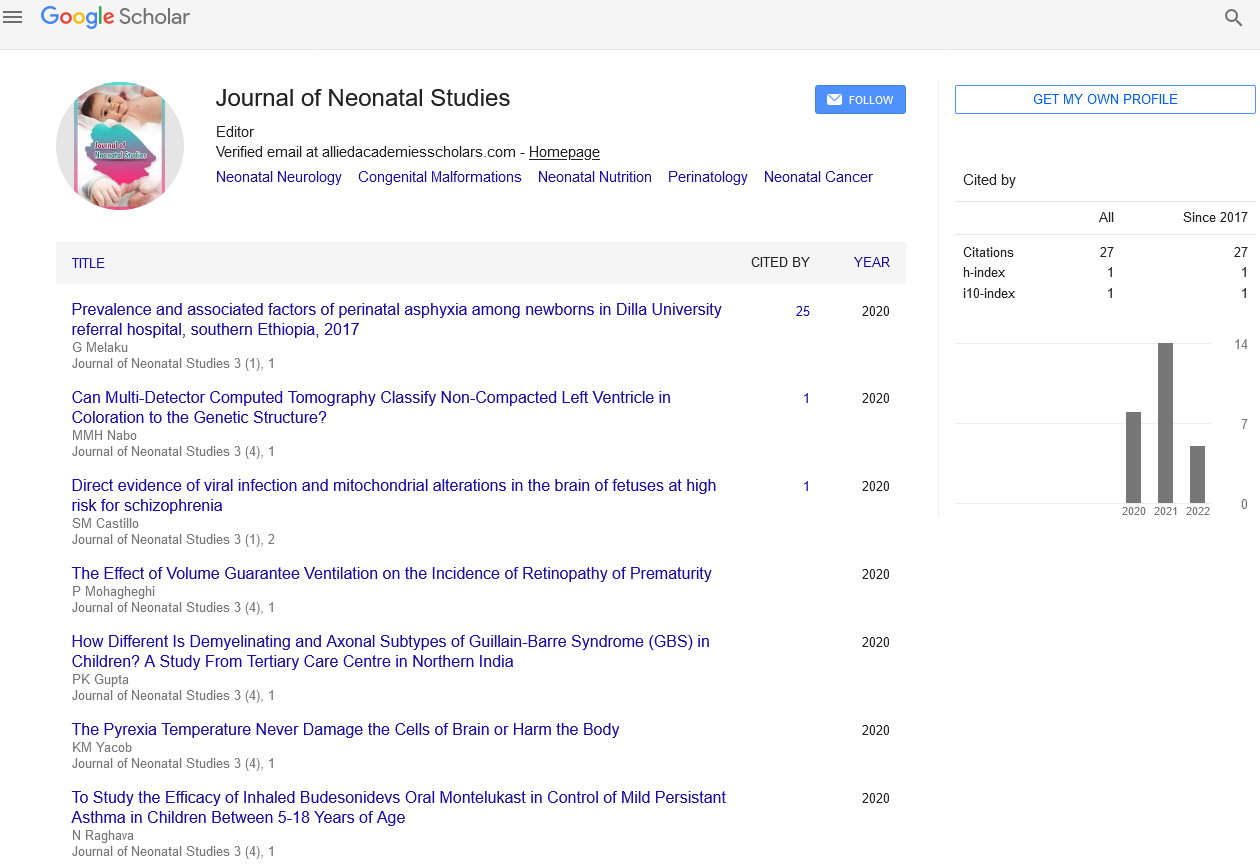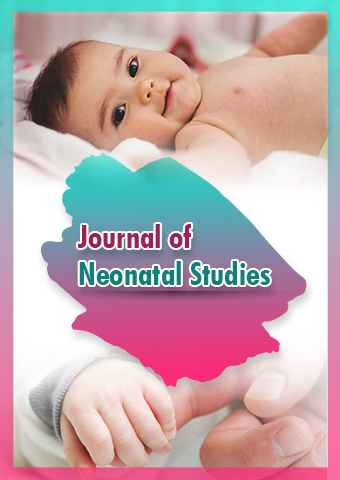Perspective - Journal of Neonatal Studies (2024) Volume 7, Issue 4
Necrotizing Enterocolitis (NEC): Gastrointestinal Condition that Primarily Affects Premature Infants
- Corresponding Author:
- Shauntae Ajua
Department of Neonatal Surgery, The Accra College of Medicine, Ghana
E-mail: shauntae_ajua@acm.edu
Received: 03-Jul-2024, Manuscript No. JNS-24-150522; Editor assigned: 05-Jul-2024, PreQC No. JNS-24-150522 (PQ); Reviewed: 19-Jul-2024, QC No. JNS-24-150522; Revised: 20-Aug-2024, Manuscript No. JNS-24-150522 (R); Published: 27-Aug-2024, DOI: 10.37532/JNS.2024.7(4).249-250
Introduction
Necrotizing Enterocolitis (NEC) is a devastating condition that primarily affects premature infants. It is characterized by inflammation and bacterial invasion of the intestines, leading to tissue death (necrosis) and, in severe cases, perforation of the intestinal wall. NEC typically occurs within the first two to six weeks after birth and is a leading cause of morbidity and mortality in premature infants.
Description
Causes of necrotizing enterocolitis
The exact cause of NEC is not fully understood, but several factors are believed to contribute to its development. These include:
Prematurity: Premature infants have underdeveloped intestines that are more susceptible to inflammation and infection. The earlier a baby is born, the higher the risk of developing NEC.
Bacterial infection: Bacteria such as Escherichia coli (E. coli) and Klebsiella are often implicated in NEC. These pathogens invade the intestinal wall, leading to inflammation and necrosis.
Formula feeding: Formula-fed infants are at a higher risk of developing NEC compared to breastfed infants. Breast milk contains protective factors that help prevent infection and inflammation.
Intestinal dysbiosis: An imbalance in the gut microbiome can contribute to the development of NEC. A healthy gut microbiome is essential for maintaining intestinal health.
Low birth weight: Infants weighing less than 2 pounds at birth are at a higher risk of developing NEC.
Other risk factors: Congenital heart disease, birth asphyxia, prolonged rupture of membranes, and exchange transfusion are also associated with an increased risk of NEC.
Symptoms of necrotizing enterocolitis
The symptoms of NEC can vary but often include:
Abdominal distention: Swelling or bloating of the abdomen.
Feeding intolerance: Difficulty in feeding, including vomiting and refusal to eat.
Bilious vomiting: Vomiting of bile, which is a greenish-yellow fluid.
Bloody stools: Presence of blood in the stool.
Lethargy: Decreased activity and energy levels.
Temperature instability: Fluctuations in body temperature.
Severe abdominal pain: Pain in the abdomen, which may be a sign of intestinal perforation.
Diagnosis of necrotizing enterocolitis
Diagnosing NEC involves a combination of clinical evaluation and diagnostic tests. The diagnostic process typically includes:
Clinical evaluation: Physical examination to assess abdominal enlargement, tenderness, and bowel sounds. Monitoring of vital signs and symptoms.
Radiographic imaging: X-rays or ultrasound to detect signs of intestinal inflammation, pneumatosis intestinalis (air within the bowel wall), and perforation.
Blood tests: Laboratory tests to check for infection, inflammation, and other abnormalities.
Treatment of necrotizing enterocolitis
The treatment of NEC focuses on stabilizing the infant, stopping the progression of the disease, and preventing complications. Treatment options include:
Bowel rest: Temporary cessation of enteral feeding to allow the intestines to heal.
Nasogastric tube: Insertion of a nasogastric tube to decompress the stomach and remove excess air and fluid.
Intravenous fluids and nutrition: Administration of IV fluids and nutrients to support the infant’s nutritional needs.
Antibiotics: Use of antibiotics to treat bacterial infection and prevent sepsis.
Surgery: In severe cases, surgical intervention may be necessary to remove damaged sections of the intestine.
Prevention of necrotizing enterocolitis
Preventing NEC involves several strategies aimed at reducing risk factors and promoting intestinal health:
Breastfeeding: Encouraging breastfeeding, as breast milk contains protective factors that help prevent infection and inflammation.
Probiotics: Administration of probiotics to support a healthy gut microbiome.
Careful feeding practices: Gradual introduction of enteral feeding and monitoring for signs of feeding intolerance.
Sterile techniques: Maintaining a sterile environment to prevent infections.
Early detection: Regular monitoring and early detection of symptoms to initiate prompt treatment.
Prognosis and long-term outcomes
The prognosis for infants with NEC varies depending on the severity of the condition and the timeliness of treatment. While some infants recover with minimal long-term effects, others may experience complications such as short-gut syndrome, intestinal strictures, and developmental delays. Early detection and intervention are crucial for improving outcomes and reducing the risk of long-term complications.
Conclusion
Necrotizing enterocolitis is a serious and potentially life-threatening condition that primarily affects premature infants. Understanding the causes, symptoms, diagnosis, treatment, and prevention strategies is essential for improving outcomes and reducing the risk of complications. By implementing preventive measures and providing timely, appropriate care, healthcare providers can help ensure the best possible outcomes for infants affected by NEC.

